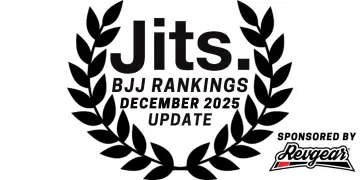Learning leglocks and leg entanglements can often be confusing and intimidating at first, but understanding these basic positions is absolutely vital to succeeding in BJJ. In the past leglocks were seen as incredibly dangerous and new grapplers were often advised to stay away from learning them, but now the world of BJJ competition has become more open-minded. Not only are heel hooks and other leglocks seen as a major part of modern submission-only competition, but the IBJJF even moved to legalize heel hooks in no gi competition in 2021. This means that anyone who remains resistant to the idea of learning leg entanglements will only get left behind when coming up against other competitors.
For more of our BJJ guides that explain the different aspects of the sport, click here.
Basic BJJ Leg Entanglements: The Ultimate Guide
The frequency with which you might encounter each of these basic leg entanglements will be different depending on what BJJ ruleset you compete under. Because reaping the knee and heel hooks aren’t legal in most gi competition, leg entanglements that are used primarily to achieve those two goals are not used as often. Likewise, in more open rulesets like ADCC there will be many more competitors seeking out positions that allow for the use of those techniques. The simplest way to categorize leg entanglements is whether the circuit is open or closed, which references the connection between both of your legs around one of your opponent’s legs.
Basic Open Circuit Leg Entanglements
Leg entanglements described as ‘open circuit’ in BJJ are those where the control is achieved by the legs hooking either in front or behind of the opponent’s legs, instead of having them locked together. Generally these are used more often in BJJ competitions in the gi or where heel hooks are not allowed, although not exclusively. These are often the first leg entanglements that new starters will learn, although they are still used at the highest levels of the sport. Even BJJ competitors who focus on achieving closed circuit leg entanglements will often use these positions as starting points before transitioning further.
Ashi Garami
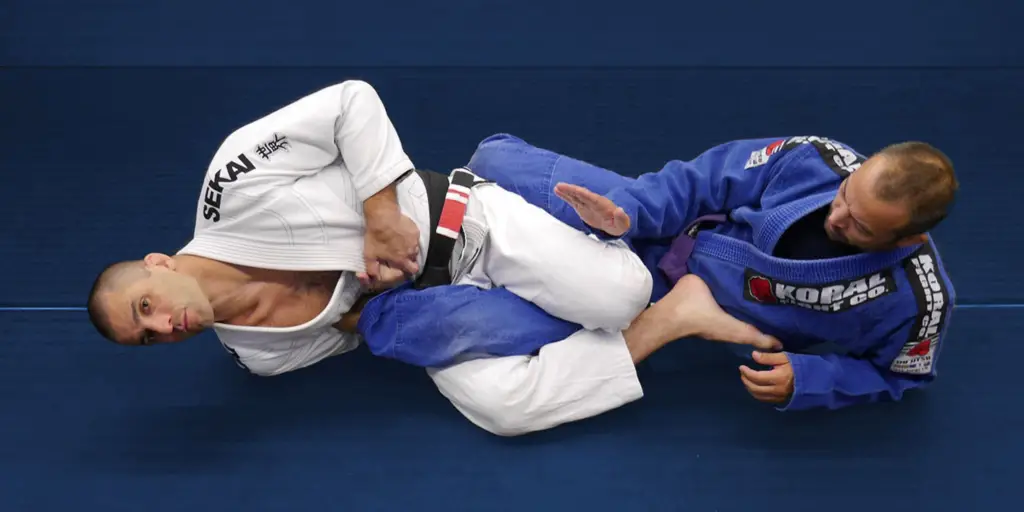
Ashi Garami is often regarded as the most basic of all leg entanglements used in BJJ, and is usually the first that practitioners will ever be introduced to. It’s visually similar to single leg X guard and the two are often confused, but Ashi Garami requires the opponent to be seated instead of standing above you. With the opponent’s foot in your armpit, the leg on the same side of your body will be coming from underneath the opponent and hooked on the hip of that same leg. The other leg will then be in between the opponent’s legs and hooked on their butt while that knee will be clamped over the opponent’s trapped leg in order to control it.
Cross Ashi Garami

Although Cross Ashi Garami can appear to be the same as standard Ashi Garami to the untrained eye, the subtle difference in the position changes the attacks and transitions available. The legs are in the same configuration as they would be in Ashi Garami and would be used for the same purpose, but upper body is slightly different as the opponent’s foot will now be in the other armpit instead. Although transitioning to passing is easier here than most other basic leg entanglements used in BJJ, it’s also much harder to prevent the opponent from standing up as well.
Butterfly Ashi Garami
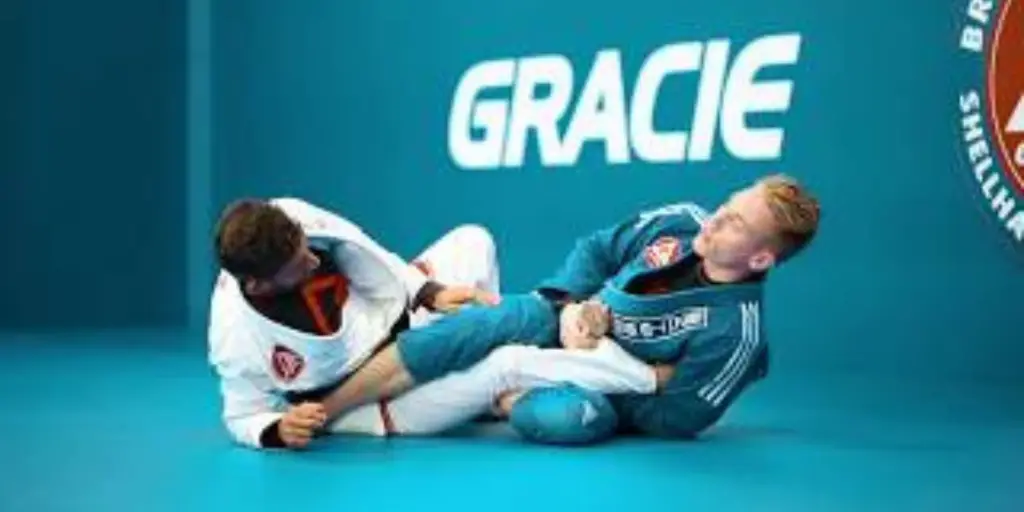
Butterfly Ashi Garami is another variation on the traditional Ashi Garami position, although the differences are much greater in this case. This is one of the more niche leg entanglements used in BJJ and is almost exclusively used to attack straight ankle-locks. The upper body works the same as traditional Ashi Garami, but the legs are switched the other way around. The same-side leg is now hooking on the inside of the opponent’s thigh similarly to a butterfly hook (hence the name) and the other leg is reaching through the opponent’s legs and controlling the hip of the leg you are attacking.
Basic Closed Circuit Leg Entanglements
Closed circuit leg entanglements are defined by the fact that both of the legs are locked around one of the opponent’s legs in a variety of different fashions. Although it is not impossible to apply a heel hook from open circuit leg entanglements, the majority of heel hooks in BJJ competition are done with a closed circuit as it offers greater control of the opponent’s leg. In order to achieve the greater control afforded by these positions, they often require more elaborate or difficult entries, or even transitions from open circuit leg entanglements.
Outside Ashi Garami

Outside Ashi Garami is another slight variation on the traditional Ashi Garami, but this position also allows the attacker to close the circuit by crossing their feet. This is often seen as the most basic of all closed circuit leg entanglements in BJJ, and is often the next step in learning leglocks after traditional Ashi Garami. While the upper body and the leg on the same side as the opponent’s leg are in the same position, the other leg is now reaching through the opponent’s legs and all the way over to the hip in order for both legs to connect. One important detail is that the legs should be flared outward in order to maintain distance, rather than having the knees pinched together.
50/50 (Fifty-Fifty)
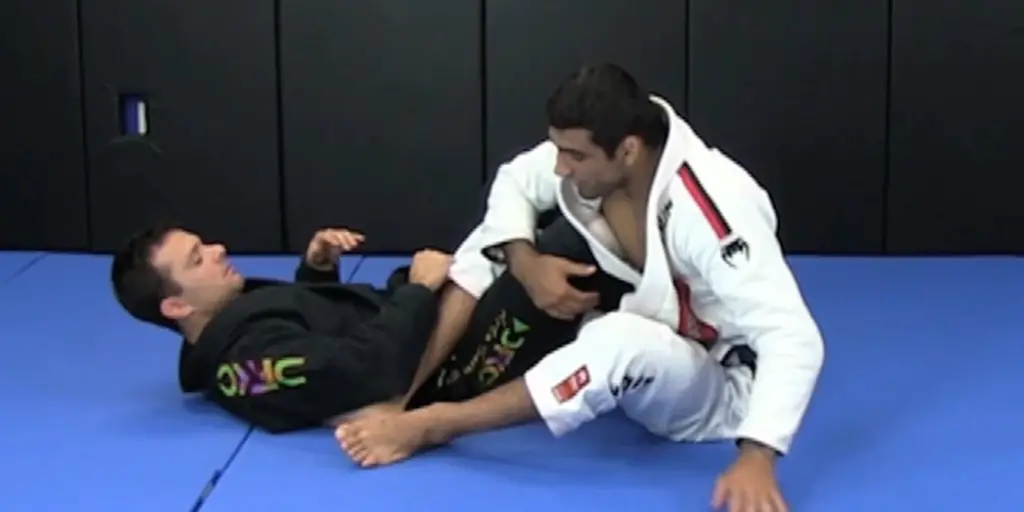
50/50 gets it’s name from the fact that out of all basic BJJ leg entanglements, it is the only one that is completely symmetrical. That means that whatever one practitioner can do, the other can do too. Both players are seated facing one another with their legs wrapped around one leg of their opponent, in a similar fashion to Outside Ashi Garami. The main difference is that the opponent’s leg is on the other side of your body, allowing them to connect their legs in the same way that you can. Although this is a symmetrical position there are still ways to tilt the balance in your favor, like turning toward the mat and transitioning to the 80/20 position or breaking the opponent’s circuit while maintaining your own.
Inside Ashi Garami (The Reap)

This is one of the few leg entanglements that is absolutely not allowed in IBJJF gi competition under any circumstances, or most other rulesets for BJJ in the gi. The opponent’s foot should be controlled in the armpit furthest away from them, while the leg that is underneath them laces all the way over the top of that leg and back underneath their free leg. The other leg then secures the position by connecting to the first leg, while underneath the opponent’s free leg. Because Inside Ashi Garami involves reaping the opponent’s knee inwards, it’s a fantastic finishing position for heel hooks.
The Saddle
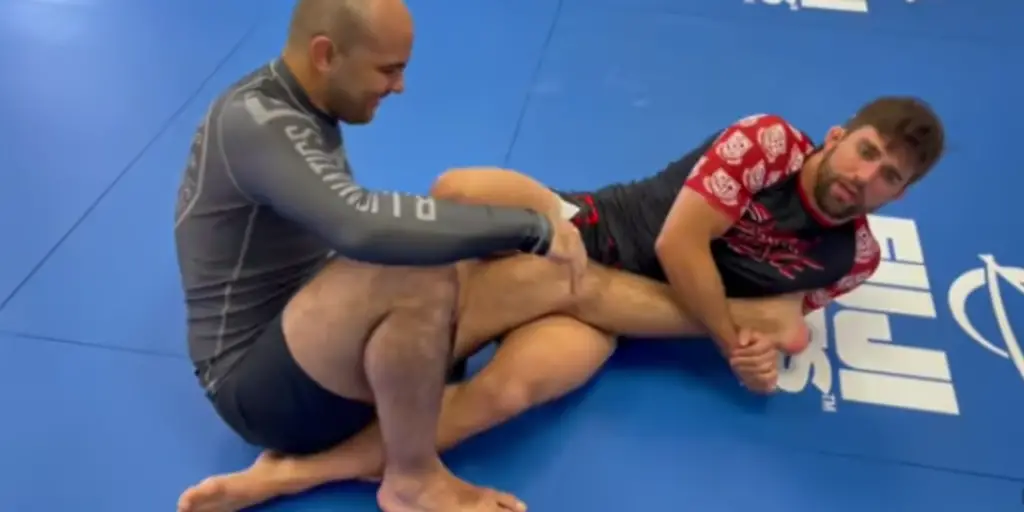
The Saddle is one of the most common leg entanglements used in no gi competition as it is one of the easiest to control and finish an opponent from in BJJ. The legs are in the same position as they would be for Inside Ashi Garami, but the opponent’s leg is now trapped in the other armpit instead. Although the outside leg is still reaping the opponent’s leg, this position is not de facto illegal in IBJJF gi competition. Instead, anyone using it under that ruleset or a similar one would only be able to attack the opposite leg if they want to avoid disqualification.






